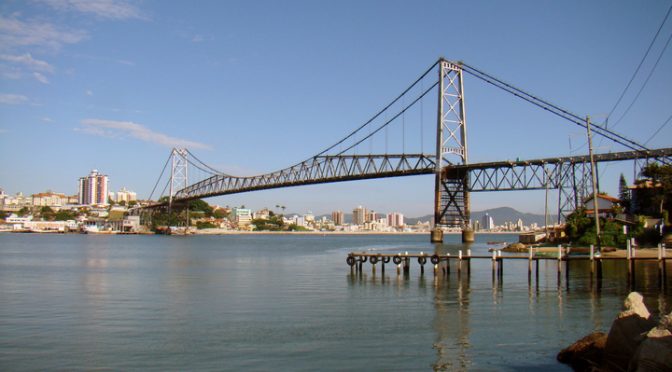This Wednesday (December 16, 2020) Prof. Hermes Carvalho will present the paper
The challenges of rehabilitating the Hercílio Luz suspension bridge
The Hercílio Luz suspension bridge, built-in 1926, has been out of service since 1991 due to high corrosion levels and structural element impairment. A complete rehabilitation project was developed which included the replacement of the impaired items and foundation strengthening. For this, an auxiliary structure was employed to support the central span during the rehabilitation process. A carefully studied load transfer process, where the central span loading is transferred from the eye-bar towards the auxiliary structure will be performed. For this purpose, a synchronized jacking sequence will be used, which was predefined by means of numerical model analysis. All structural elements had their designs evaluated and some geometric changes were implemented.
This lecture will present all the methodology developed in the rehabilitation project of Hercilio Luz bridge, as well as the development stages up to the end of the work.



 Hermes Carvalho received a B.S. degree in mechanical engineering from the Federal University of Minas Gerais. Brazil, in 2007, the M.S. degree in mechanical engineering from the same university, in 2010. Ph.D. degree in structural engineering at the Federal University of Minas Gerais. Brazil, in 2015.
Hermes Carvalho received a B.S. degree in mechanical engineering from the Federal University of Minas Gerais. Brazil, in 2007, the M.S. degree in mechanical engineering from the same university, in 2010. Ph.D. degree in structural engineering at the Federal University of Minas Gerais. Brazil, in 2015.
He is currently a Professor of the Structural Engineering Department — Federal University of Minas Gerais. Researcher in Structural Engineering, mainly in the fields of Steel and Composite Structures, Offshore, Bridges and Structural Mechanics. He has experience in the design and execution of civil and mechanical structures, teaching, and research related to Structural Engineering. He is a coordinator of research projects at VALE, PETROBRAS, CAPES, FAPEMIG, CEMIG / ANEEL, FCT.
The reviewer of international journals in his area of research (International Journal of Fatigue, Engineering Failure Analysis, Journal Performance and Facilities, Structures, Maritime Engineering, among others). He is a member of the European technical committee ESIS-TC12 – Risk analysis and safety of large structures and components and works with the Brazilian Association of Technical Standards (ABNT) in the elaboration of technical codes for structures.

